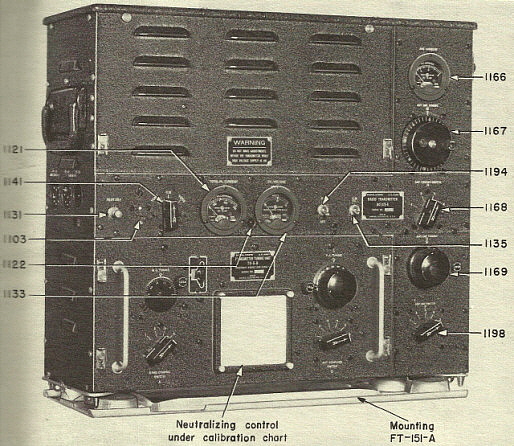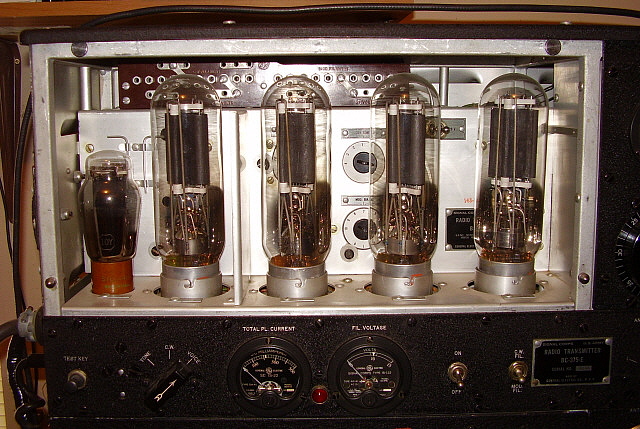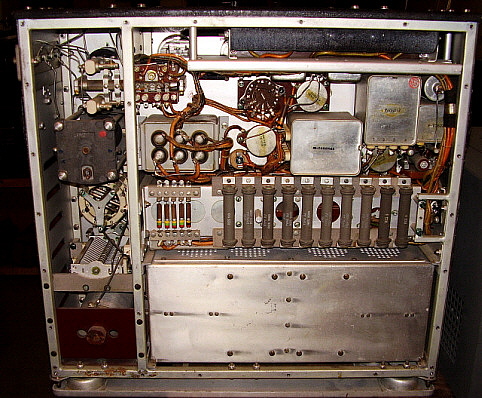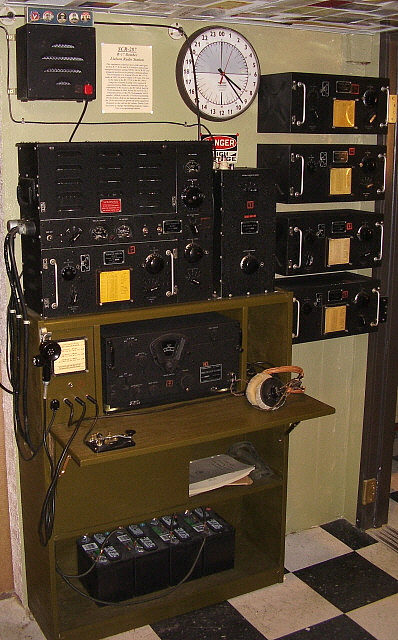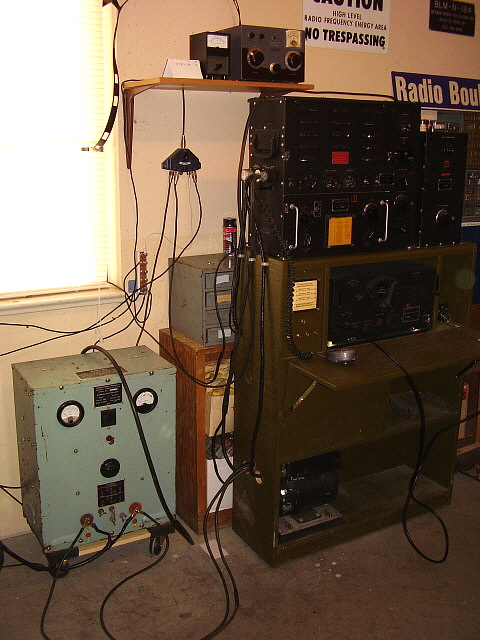|
The most important things to do to your BC-375/BC-191
transmitter are:
1. If you're going to
operate using a +24vdc battery setup then reduce power output to around 40 to 50
watts. This will improve modulation
symmetry. You can increase the power to 65 watts for operation of the BC-191 on
the RA-34 power supply. If running a BC-375 on a high-current +28vdc power
source, like the PP-1104, RF power can be increased to 75 watts on voice.
2. Dynamically Neutralize the TU at the frequency you intend to operate the
transmitter. This is the most important step for "clean sounding" audio
without the typical BC-375 "fuzzy" sound. This step is necessary no
matter how you are powering the transmitter. If you have "matching" TUs for the
transmitter, that is, the serial numbers all match indicating that the TU to be
used is the original one for the transmitter, you might find that the
neutralization is very close already. However, it's very strongly recommended that the neutralization
be set by the "dynamic" method, even on matching TUs, to assure the absolute
best sounding and cleanest audio from your BC-375.
3. Find a high quality Carbon Microphone or use an Electret
substitute. Quality sound will usually require a new Carbon element in order to
have the response necessary for good audio modulation. Remember, we are trying
to achieve "clean" audio with the "military" sound - not Broadcast Quality
audio. If you're looking for Broadcast audio, you'll never find it in a BC-375
or BC-191.
4. If you're using
batteries as the power source, make sure your
Battery-Dynamotor set-up is operating correctly and that the batteries are at
full charge. Be aware that batteries alone will NOT supply +28vdc power. Without the charger system
(that was always
running when the airplane was aloft - or the vehicle motor running in the case of the
BC-191) the batteries by themselves will very rapidly discharge. Additionally, at full charge the batteries
alone will only supply about
+26vdc maximum and that begins to decrease immediately with the transmitter in
operation. Typical batteries will provide +24vdc for the majority of your
operation. Turn off the BC-375 between transmissions to conserve the battery's
charge as much as possible. This would be for net operation only and probably
not practical for a "one-on-one" QSO. You can also parallel a DC power
supply that can somewhat act like a generator, providing charging while
operating the transmitter. The power supply should be capable of at least +30vdc
and have current capability in excess of 40 amps but even if you can't supply
that much current, 10 amps or so will help keep your batteries charged while
you're in the receive mode.
5. The BC-375 runs much better at +28vdc. Use of a high current power supply
such as the PP-1104 will allow the BC-375 to operate at +28vdc with ample
current reserve. It's been my experience that when the BC-375 is run at a solid
+28vdc you can increase power output to 75 watts without non-symmetrical
modulation appearing and your signal won't FM - at least on 160 meters or 75 meters, it won't.
Since the dynamotor is operating to spec, the output voltage is in excess of
+1000vdc and because the dynamotor is running faster with plenty of reserve
current, that +1000vdc is pretty stable to load variations, thus the lack of FMing
and better all around performance. Dynamic neutralization is still necessary,
though.
6. The BC-191 can be operated with its specific military AC power supply,
the RA-34, which eliminates the need for batteries and the dynamotor. The RA-34
will not operate a BC-375 however due to its +12 volt LV design and the
different wiring of the low voltage section of the transmitter. The RA-34 provides
dual 12 volt supplies (both AC and DC) that power different sections of the
BC-191 transmitter (AC to the tube filaments, DC for the other LV requirements.) The BC-375 design ties these two low voltage sections together
in parallel and runs them on +28vdc with dropping resistors as needed. The RA-34
will provide stable, quite operation of the BC-191 but the RA-34 does have a
quirk or two. If you use a BC-191 and RA-34 combo on CW you'll
have quite a bit of ripple on the CW note since parts of the transmitter are
being operated with 12VAC. It's likely that the majority of military operations using the
BC-191 were on VOICE, so the minor ripple on a rarely used CW mode didn't bother
the Army. It was still readable, but be prepared for critiques when operating CW
with a BC-191 and RA-34 combo. More than likely, you're going to have to be
careful on VOICE and don't try to load the transmitter to maximum output. You usually can run the BC-191/RA-34 combo at about 65 watts output
without any problems.
With these steps, your BC-375/BC-191 will sound about as
good as it can.
|
